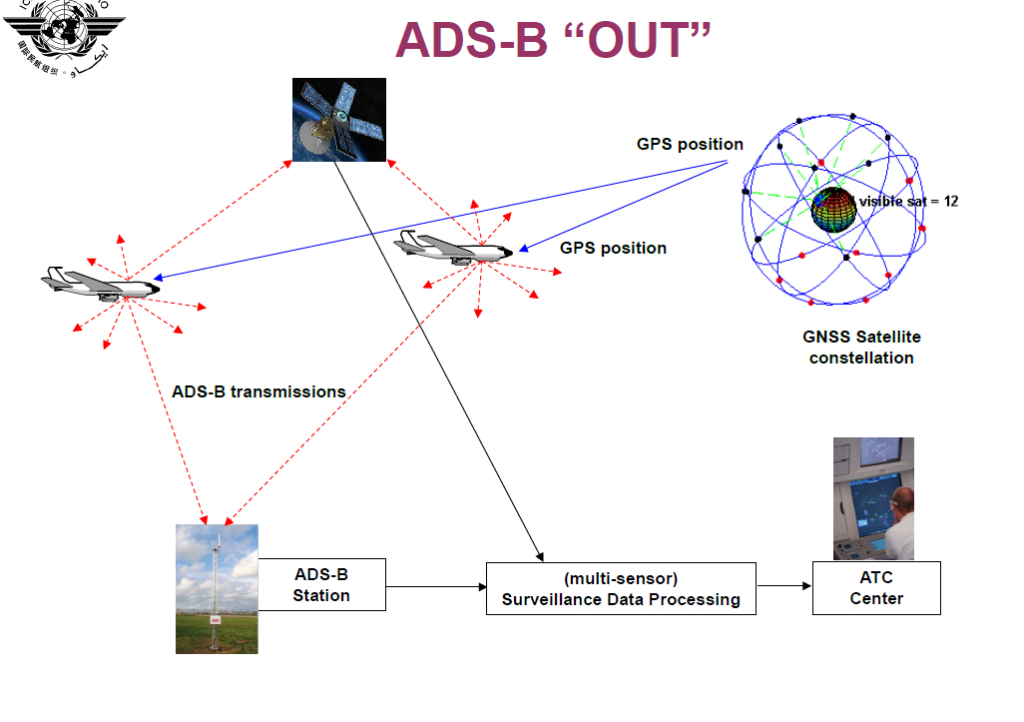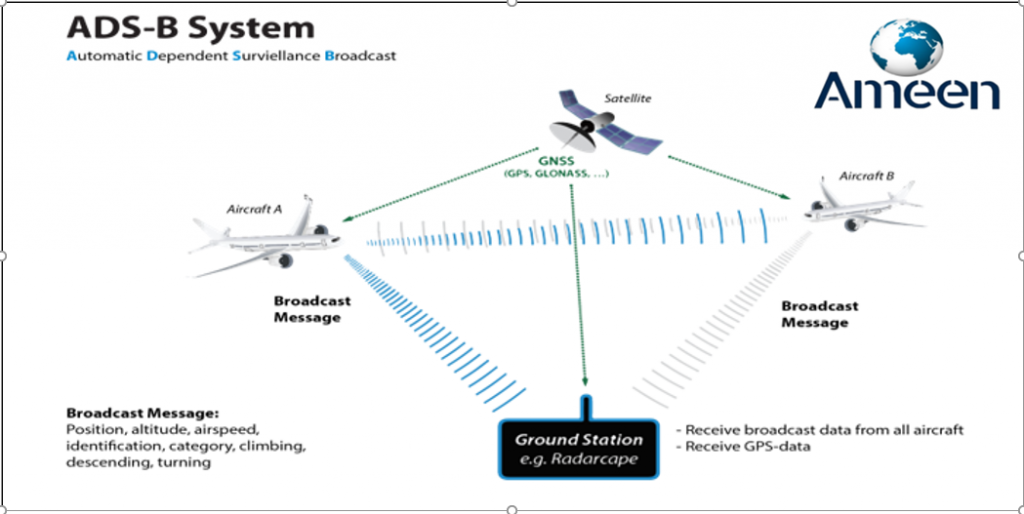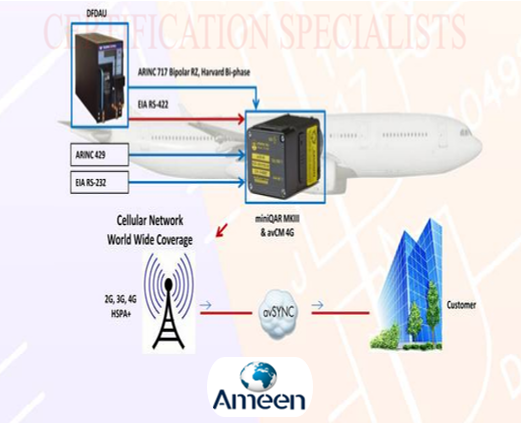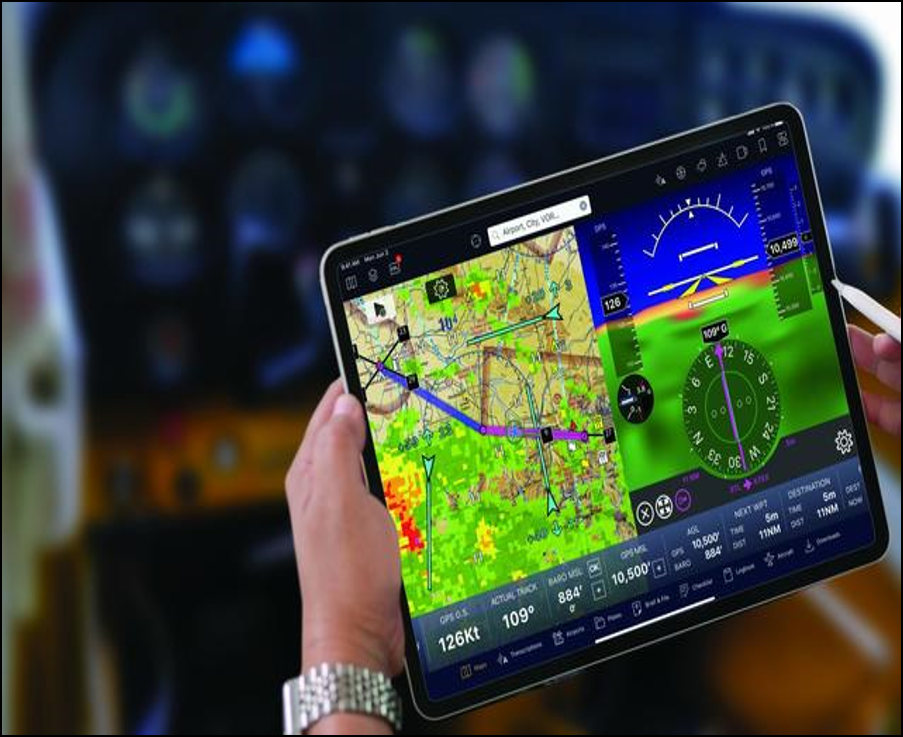




ADS-B
Automatic Dependent Surveillane Broadcast
Definition:A means by which aircraft, aerodrome vehicles and other objects can automatically transmit and/or receive data such as identification, position and additional data, as appropriate, in a broadcast mode via a data link.

ADS-B Out DO-260B Mandate
European Transponder DO-260B Mandate
The future required capabilities defined in the large aviation programs such as NEXTGEN (US) and SESAR (EUROPE) are now in the implementation phase. In the wake of those programs, many local aviation authorities are closely following the new technology trends to be able to cope with the ever increasing air traffic. The latest European mandate, announced in the official journal of the European Union (Commission Implementing Rule No 1207/2011 amended by No 1028/2014 in Sept 2014), requiring an ADS-B OUT capability compliant with the DO-260B (ED-102A in Europe) standard by 2016 is a perfect example of the changes to come in the ATC and aviation world.
As defined in the CIR 1207/2011 and 1028/2014, operators shall ensure that all their aircraft with a maximum certified take-off mass exceeding 5 700kg or having a maximum cruising true airspeed capability greater than 250kt with an individual certificate of airworthiness first issued on or after June 8th 2016, are equipped with
DO-260B compliant transponders.
On the retrofit side, operators shall ensure that by June 7th 2020 at the latest, their aircraft with a maximum certified take-off mass exceeding 5 700kg or having a maximum cruising true airspeed capability greater than 250kt with an individual certificate of airworthiness first issued before June 8th 2016, are equipped with DO-260B compliant transponders.
ADS-B mandates requesting DO-260B compliance are quickly appearing across the World; United Arab Emirates (2016), Saudi Arabia (2016) and of course United States of America (2020).
AMEEN team is able today to offer to airlines a wide range of compliant solutions to a large number of platforms including Airbus, Boeing, ATR and Bombardier.
What is new with DO -260B?
ADS-B capable transponders are operated for several years now and it’s only recently (2010 in Canada, 2013 in Australia) that the first mandates over large non radar airspaces started to show up with DO-260 and DO-260A. But it’s only with the latest evolution of the DO-260 standard; DO-260B (equivalent to ED-102A in Europe) also known as “version 2” that ADS-B technology is considered mature enough to be used in highly dense traffic areas like in Europe or US. FAA have two ADS-B concepts, “UAT” for, mainly non-commercial operation below FL-185 and “1090 Extended Squitter” for operation above FL-185, however UAT is not implemented in Europe at this time. A complete description of this standard can be found in the RTCA DO-260B document: “Minimum Operational Performance Standards for 1090Mhz Extended Squitter, Automatic Dependent Surveillance- Broadcast (ADS-B) and Traffic Information Services-Broadcast (TIS-B)” dated December 2nd 2009.
In essence, DO-260B standard brings the following changes:
- Changes in Calculation of Quality Values (NIC/SIL) give Greater Accuracy for ADS-B IN Functions
- Provisions for Future ADS-B IN Functions Are Defined in DO-260B
- ADS-B Failure Annunciation, On Ground Determination
- Updates to On ground vs Airborne Source Selection Logic
- MOPS Test Updates
- Updates for New/Changed Message Fields, Position Extrapolation Test Updated
- Program Pin Capability Added for DO-260B Configuration Parameters


A Complex Retrofit
For existing aircraft, impact analysis of the standard and European mandate shows that the retrofit is a lot more complex than a simple software update of the transponder. Most of the existing transponders will indeed require a hardware update or an exchange. Other equipment such as the Multi-Mode Receiver/GPS Receiver (CS-ACNS and AC 20-165A) and the Flight Warning Computer are impacted too, not to mention additional wiring and documentation.
Technical Concept
ADS-B-solution adds a GNSS receivers, which makes it a very efficient Modification for aircraft without a suitable GNSS receiver. The ADS-B capability is achieved by adding two GNSS receivers to the aircraft and connecting them to the installed DO-260B ATC transponders.
ADS-B data set is completed within GNSS parameters, which are:
- Position (latitude/longitude)
- Position integrity value information
- Ground speed (GNSS velocity)
- GNSS altitude
Required Modification
The following equipment will be added to the aircraft to enable the ADS-B out functionality:
- Dual GPS Receivers (for aircraft without a suitable GPS receivers)
- The necessary wiring to connect the sensor with the DO-260B ATC transponders
- Installation materials like brackets
- DO-260B ATC Transponders (SW & HW Update)
- Indicators for New ADS-B Failure Message






